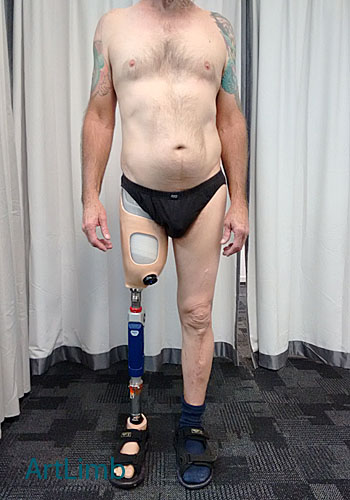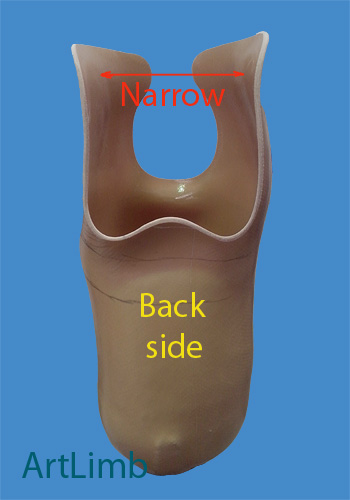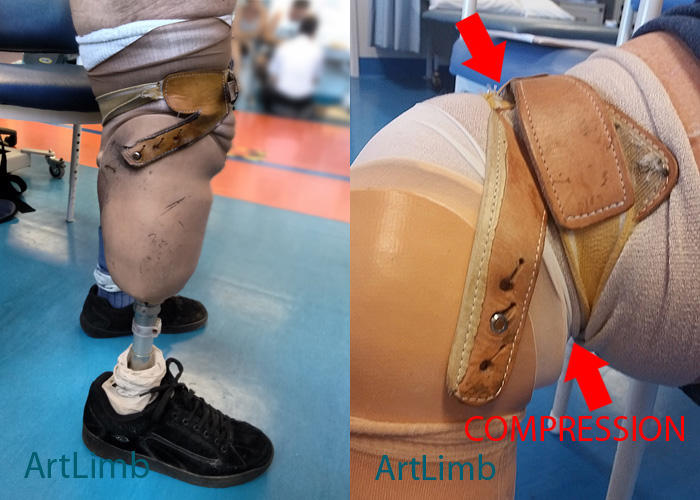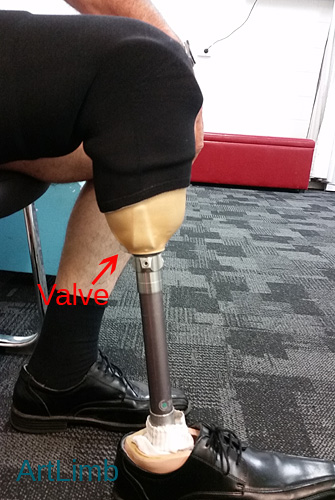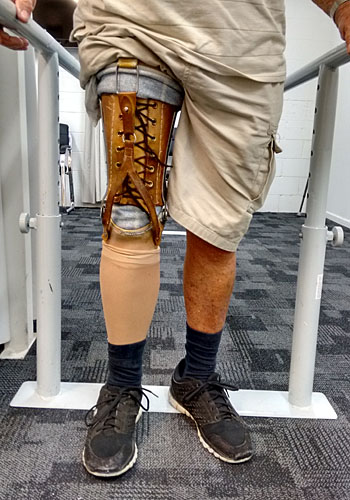There are many different ways to hold a prosthesis to your stump. Which one we decide on using is very dependent on your circumstances and abilities.
The main things we are trying to achieve are; to keep it simple (make it easy to put on and take off), make it physiologically correct, make it reliable to keep you safe and allow you to control the leg while you walk.
There are currently two main approaches to fixating prosthesis to the human body. The first method is a more conventional approach aimed at holding the prosthesis onto anatomical structures using straps, belts and impressions in the socket. The disadvantages of this are that load and friction are applied to a small area of the soft tissue. Over time, this load can cause skin damage, blood circulation disorders and local atrophy.
The second approach holds the prosthesis onto the limb using prosthetic liners. Liners can be made from relatively firm silicone or softer gels to provide fixation and protection of the stump. They gently stick to the skin and almost totally remove movement between the skin and the liner. Attachments can then be added to the liner to connect it to the prosthetic limb.
Photo below demonstrates an above knee prosthesis with shoulder straps and rigid belt (partly removed). You can see a metal hip joint that limits the patient own hips range of movement. The strap loads the shoulder area and the belt compresses the waist. We need to mention that all of this stuff collects sweat (leather, nylon, cotton) and are usually not easily cleaned.
Photo below shows the same patient as above supplied with a modern prosthesis (cosmetic cover is taken off). This new limb uses a silicon liner and a one way valve as a method of fixation. Only the liner has contact with the skin which is easy to clean.
Photo below demonstrates a below knee supracondylar prosthesis (rear view). Such prosthetic limb is held on by the narrow impression just above the knee.
Photo below demonstrates a below knee prosthesis with a cuff strap. To reduce the amount of movement felt inside the socket, the user has to over tighten the strap.
Photo below demonstrates a below knee prosthesis with a knee sleeve and air valve. This system uses atmospheric pressure to hold the prosthesis to the body.
Photo below demonstrates a below knee prosthesis with a thigh corset which significantly compresses the soft tissues of the thigh and affects on the normal movements of the knee.
Photo below shows the same patient as above supplied with a modern prosthesis. This new limb uses a gel liner with a pin lock as a method of fixation. The liner covers the lower (distal) part of thigh but does not compress the soft tissue. The liner also provides cushioning effect for the stump.


